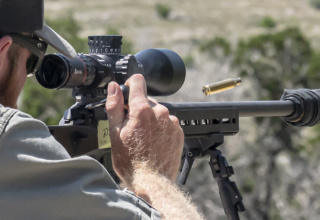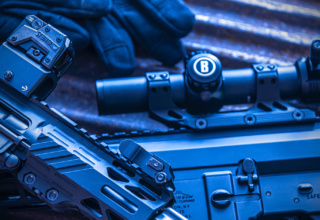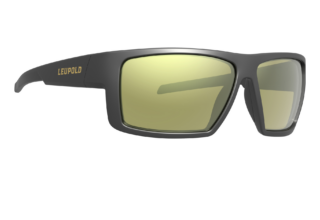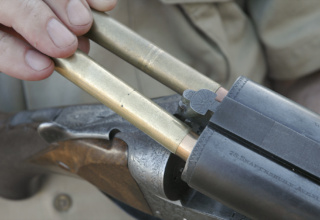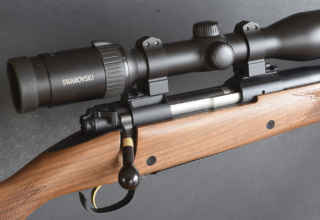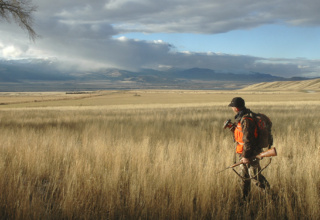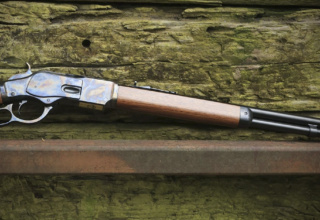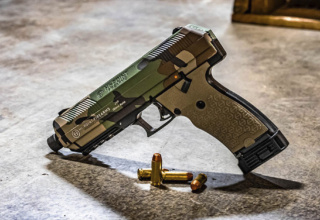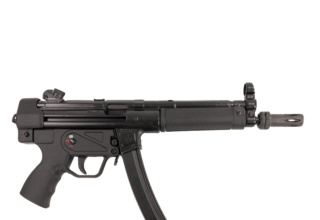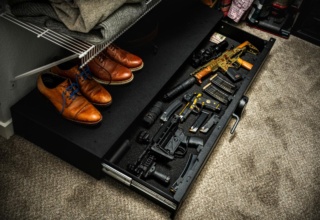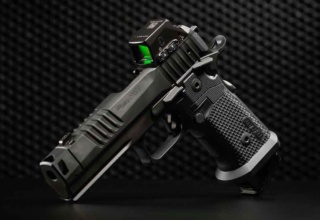Given many options, you can miss the best. Old and new, these scopes should catch your eye!
by Wayne van Zwoll
The first scoped .22 rifle I used was a slide-action Remington 121. Its Weaver J4 was optically dim — but so were its competitors of that day. They had tubes the diameter of a Magic Marker and thick, fuzzy reticles that wandered in the field as you adjusted windage and elevation. A comely .22 deserves better — like Leupold’s 2-7×33 Freedom VX for rimfires. This trim 1-inch scope weighs just 11 ounces. Appropriately, it’s parallax-corrected at 60 yards (not 150, as in scopes for big game rifles). It’s more versatile than the equally fetching, and lighter, 4×28. Power up for treetop squirrels, down for rabbits in hedgerows. Either Leupold scope dresses up a .22 rifle and makes it more effective in the field. Price for the 2-7×33: $300.
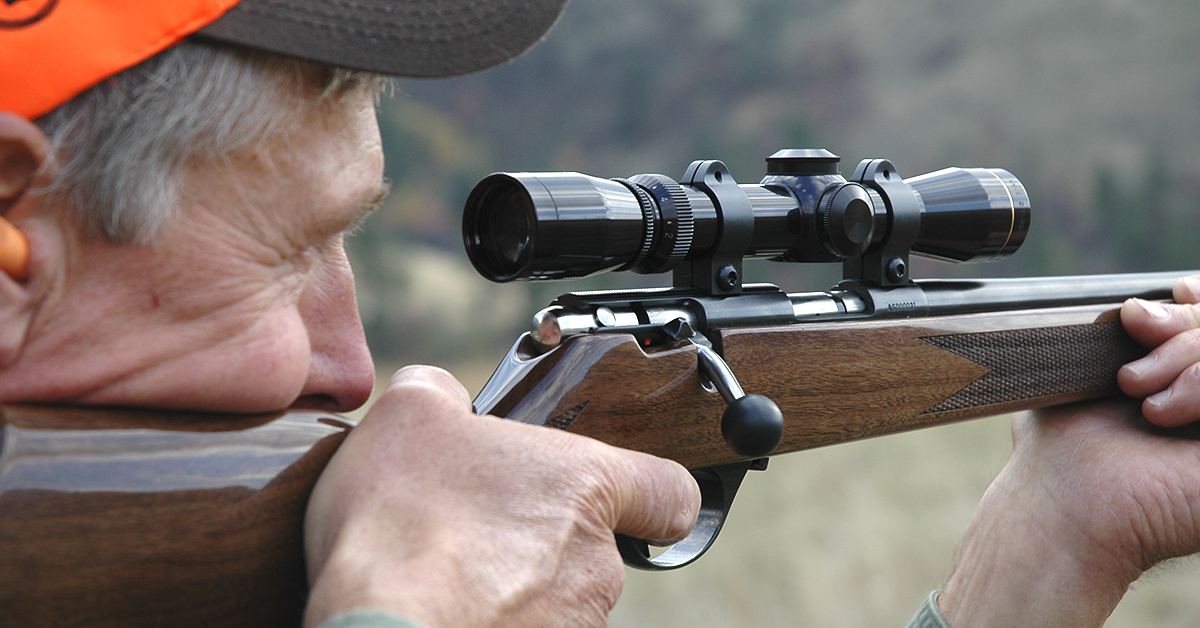
Another useful $300 optic from Beaverton, Oregon, is the FX II Ultralight 2 ½x scope. It excels on whitetail rifles and slug guns. Just 8 inches long, with a 1-inch tube and slim ocular housing, it’s also as lightweight an optic as you’ll find: 6 ½ ounces! With nearly 5 inches of eye relief and a 100-yard field of nearly 40 feet, you’re on target faster than if using iron sights. But the crisp duplex reticle affords fine aim, and quarter-minute click adjustments let you zero precisely. In my view, Leupold’s FX II Ultralight 2 ½x has all the power you need out to the 250-yard point-blank range of many big game loads, given a 200-yard zero. Most lethal hits on deer and elk are made inside that mark. A wee sight with big benefits!
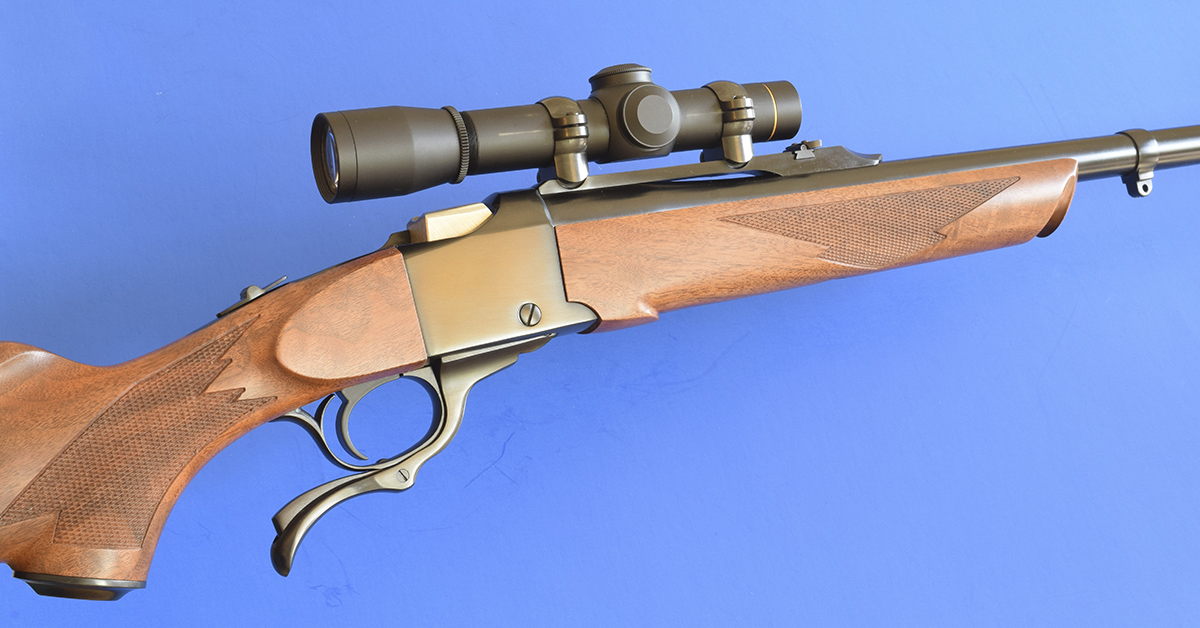
One of the best values I’ve found in riflescopes for all-around hunting is the Burris Fullfield E1. While my 2-7×33 is no longer made, you can still get a 3-9×40 for just $239! A 1-inch scope, it weighs a feathery 13 ounces. Its rear-plane Ballistic Plex reticle has three intelligently spaced tics on the 6-o’clock wire. You can reach farther with this reticle than you can accurately guess holdover with a standard plex. Still, it’s not busy.
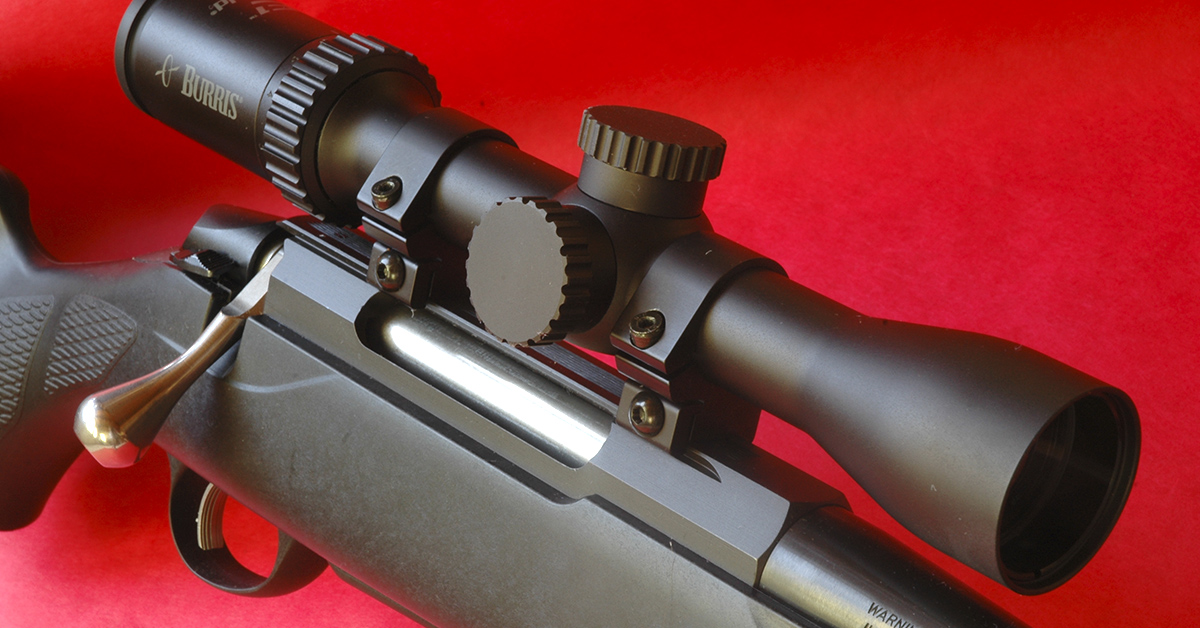
With the E1 on a Tikka rifle in .280, I shot a fine pronghorn at 380 yards after a lizard-low approach. Other pronghorns nixed any chance to further close the distance. Besides sharp optics and a turret with reliable W/E adjustments, Burris gave the Fullfield II E1conservative good looks. It comes in a 4.5-14×42 version, too.
Variable scopes took root after Weaver announced its KV 2 ¾-5x in 1950. Leupold’s Vari-X, in 1961, was an early 3-9x. Six decades later, the three-t’-nine remains hugely popular. Partly that’s because almost every riflescope maker offers one. Competition begets volume that begets bargains. You’ll look hard to find a more versatile hunting scope than a 3-9×40. At 3x, it’s ideal in cover; in open country, 6x has all the magnification you should need. Only twice have I wanted more power than 9x to kill big game. Nearly all 3-9x40s sit comfortably in low rings and weigh less than a pound.
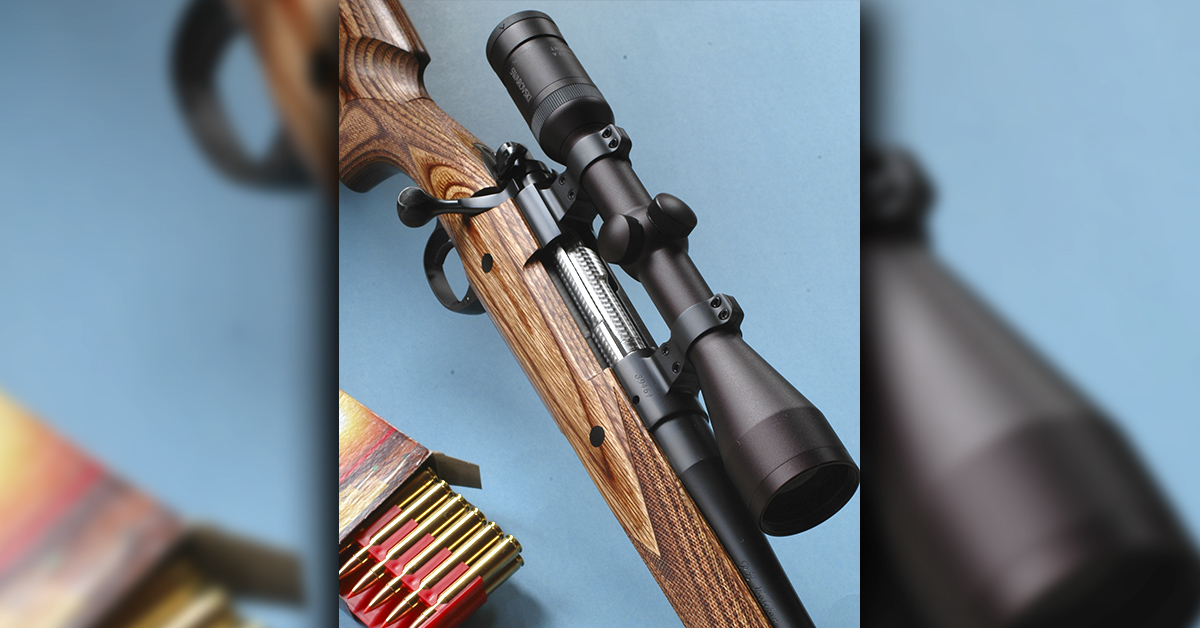
One of my favorite 3-9s has been around a long time. Swarovski has called its 3-9×36 the AV and the Z3. This 1-inch, 12-ounce scope has a rear-plane plex reticle or a “three-legged” version of it (no post over center). The scope’s $777 price reflects Swarovski’s reputation for top-shelf components, advanced lens-grinding and polishing processes, close-tolerance assembly, and brutal recoil tests. Choosing a scope for a custom M70 in .25-06 by ace rifle-smith Patrick Holehan, I settled on Swarovski’s 3-10×42, current Z3 flagship — reminding myself that the satisfaction of high quality out-lives the memory of high price.

Upscale scopes abound. Leica’s Amplus 6, still new at market, strikes me as an exceptional buy. As the name suggests, this 30mm scopes series has six-times magnification (highest power six times the lowest). A CR2032 battery powers an illuminated dot in the rear-plane L-Ballistic reticle. The elevation dial is resettable without tools. The turret has a left-side focus/parallax dial. You expect the best glass and coatings from Leica. Amplus 6 has ’em. But they’re not reflected in the price: just $1399 for the 3-18x44i I favor. You can also get 2.5-15x scopes with 50 and 56mm objectives.
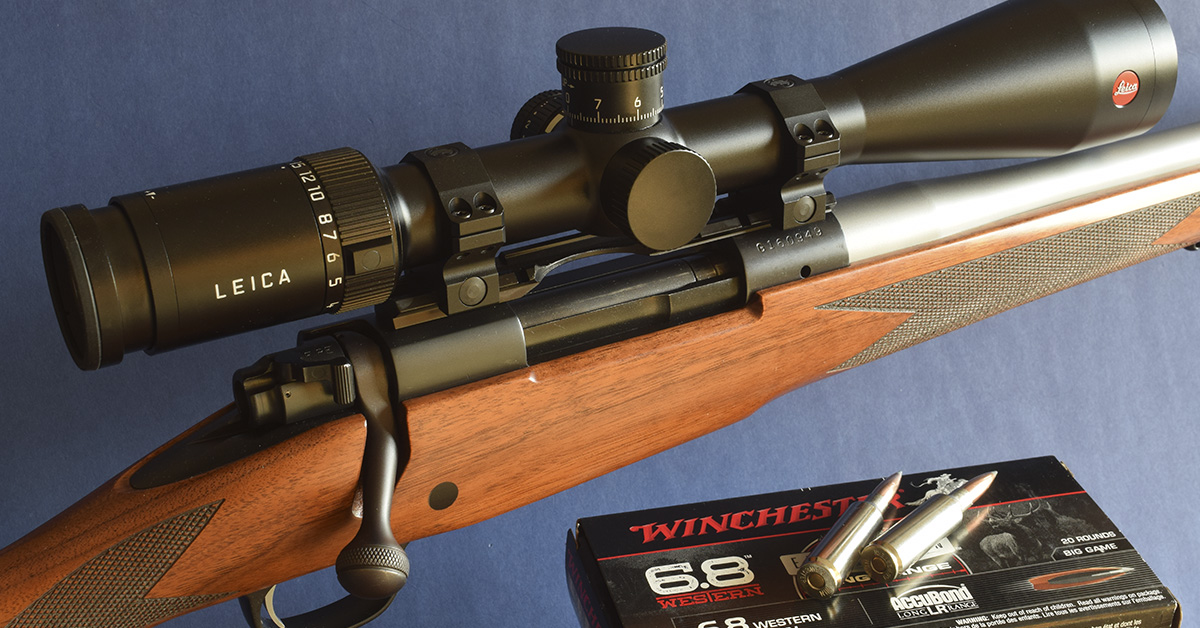
Leica has kept prices reasonable by adding a factory in Portugal, where taxes and labor costs are lower than in Germany. The employees and tooling are Leica’s. In design, assembly, and quality control, the Amplus 6 is as purely Leica as products from the Wetzlar factory. A 3-18x44i I installed on a Krieger-barreled Model 70 in 6.8 Western impressed me. It’s simply a superb scope! At 24 ounces, this Amplus 5 no heavier than you’d expect, given its quality and versatility. The magnification range suits many tasks, from jump-shooting whitetails to banging steel targets out yonder.
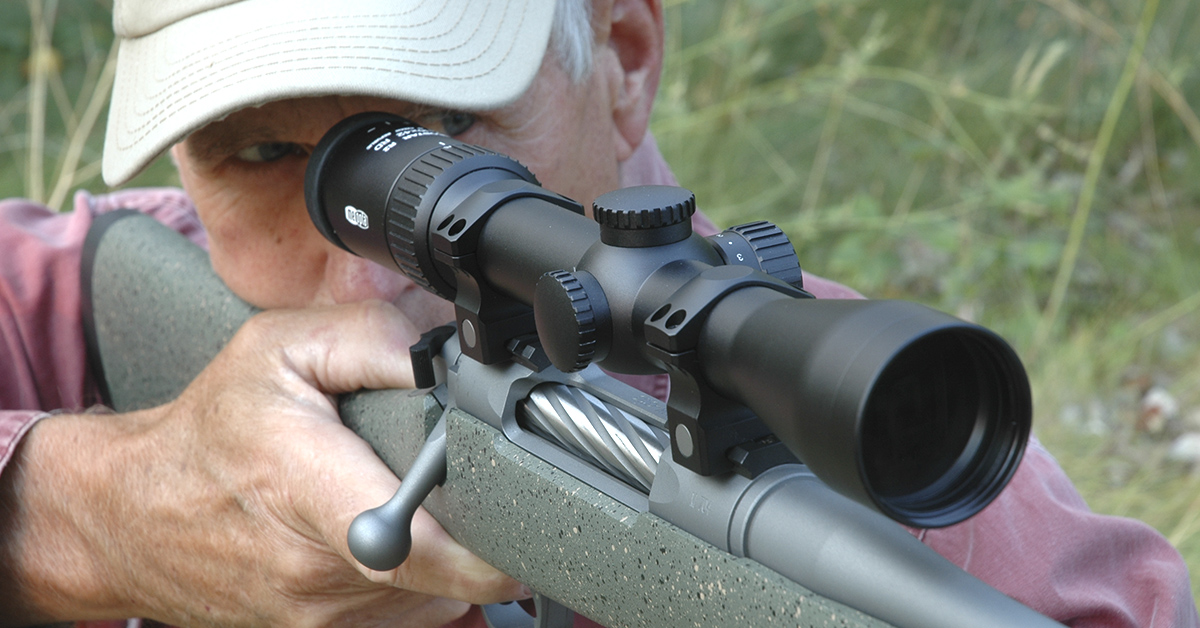
Another top-end big game scope worth a look is the Meostar R2 from Meopta, a Czech company whose R2s perform with Germany’s best sights. The 30mm 1-6×24 and 1.7-10×42 I prefer retail at $1600. Eight-position dials light up the centers of rear-plane reticles. The 17 ½-ounce 1-6×24 hunches low over my Krieger-barreled Howa in 6.5 PRC for shotgun-quick aim. The 1.7-10x adds 3 ounces and a front bell — but more versatility, too. It has 3 inches free tube behind the turret, 2 inches forward. On my Legendary Arms Works rifle in .280 Ackley, it delivers sharp, brilliant images, color-true to the rim.

Meopta scopes are built in a sprawling campus on the hem of Prerov, an industrial city founded in the 18th century and now part of the Czech Republic. Of Prerov’s 45,000 residents, 2,500 work at Meopta. The company name dates to 1946, early in a long operating period (1933-1990) under Communist control. After Czech independence in 1989, Paul Rausnitz, an American, proposed to the government that he buy Meopta. Refusing to assume its debt, he agreed to the condition that he first make one division profitable. He did, and in 1991 sealed a deal to acquire the entire operation. The Rausnitz family still owns it. A U.S. branch came in 2004. Meopta exports to 55 countries, Germany and the U.S. accounting for most sales.
High-power variable scopes have followed, and fueled, the march to long-range target matches and long pokes at game. The lure of powerful sights may stem in part from the limited experience many new shooters have with iron sights. Hiking magnification helps them see the target in more detail.
But more magnification doesn’t always bring more hits. It shrinks field of view and drains light. Details blur as it exaggerates apparent sight movement from wind, pulse-bounce, and “position wobble.”
Time spent trying to tame a fretful reticle reduces your ability to steady the rifle and can cost you a shot.
Because you can’t predict where and how your next shot afield might come, you’re best served by a scope that helps you quarter tiny targets far away and is quick to find deer dashing through brush at dusk, a sight useful offhand as well as off a bipod. Arguably, scopes became this versatile when 30mm tubes and optical voodoo inside gave them four-times power ranges. A 3-9x became a 3-12x; a 4-12x became a 4-16x. With more power, the low end of the range was too high for close-cover shots, the top end so light-limiting as to beg oversize objective lenses. While power ranges of five, six, even eight times have followed, the 4-16x still sells. The 4x’s 30-foot field at 100 yards corrals sprinting game fast; 16x is power enough for 1,000-yard steel plates, especially in wind or when mirage runs thick across targets.

Of the handful of 4-16x scopes I’ve used, the $1100 Zeiss Conquest V4 seems a bargain. It’s not in the “premium” Victory line; but your vision is keen indeed if you can distinguish the sight picture of a Zeiss Victory from that of a Conquest! The 30mm, 22 ½-ounce Conquest has a turret-side focus/parallax dial and your pick of six rear-plane, illuminated reticles with 10 brightness settings. Lenses feature Zeiss T* and LotuTec coatings to enhance light transmission and bead water for clear aim in rain. An external, resettable elevation dial has replaced a capped dial for faster access (a similar windage dial is optional). I like this V4’s 44mm objective – tidy enough that in low rings the scope clears most rifle barrels.
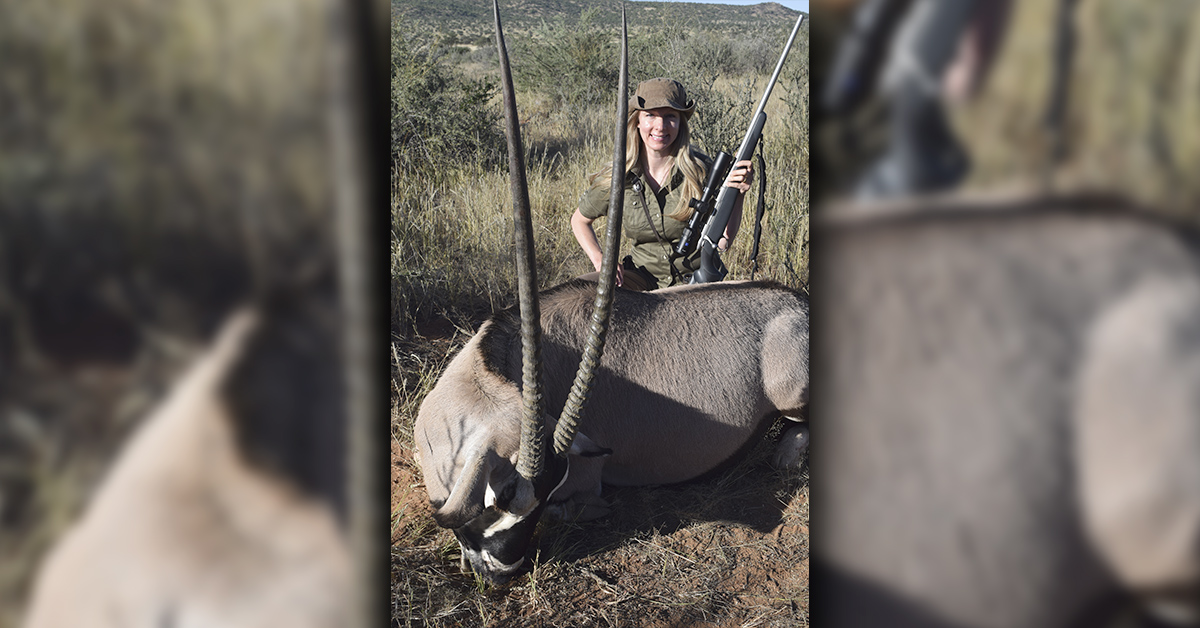
This Zeiss 4-16×44 has so impressed me, I convinced a couple of hunters to consider it for their upcoming safari. Each bought one, and used it with deadly effect on plains game, close and far away.
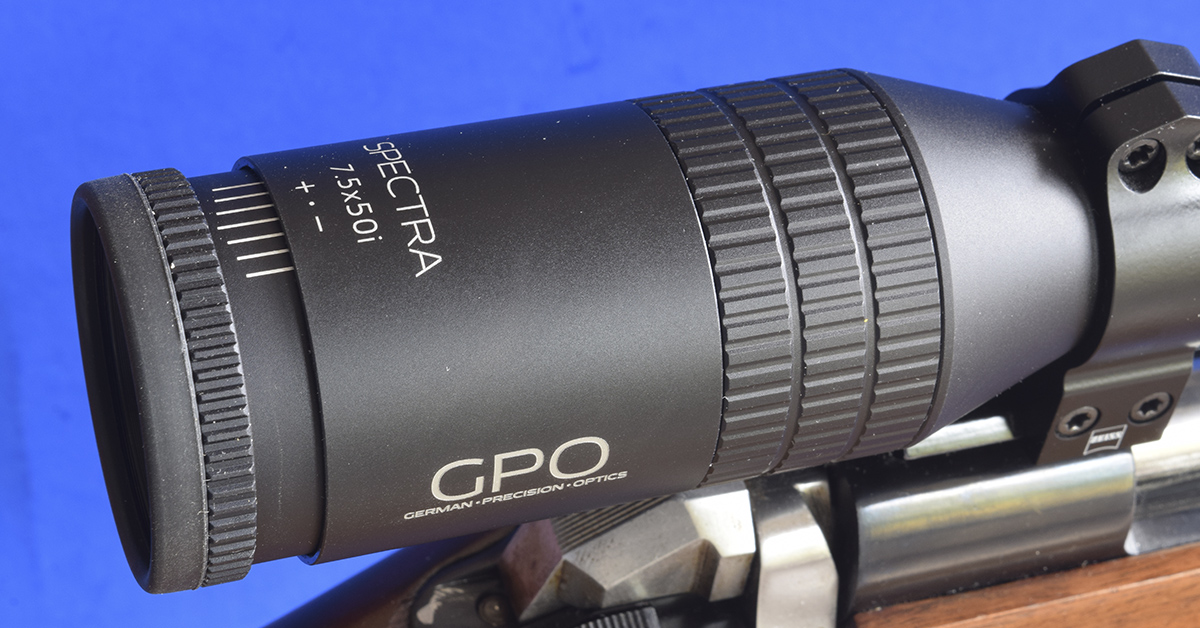
Fixed-power scopes have fallen from so many scope lines, you might think them obsolete. Those of us who often prefer them to variables are appalled by such rumors. I took heart, however, when hearing of the new Spectra 7.5x50i by German Precision Optics. Engineered in Germany by people who cut their professional teeth at Zeiss and Meopta, this 22-ounce, 7 ½x sight has power enough for all-around status.
“Components are sourced in Germany, and quality control is conducted there,” said Mike Jensen, president of GPO USA, the stateside distributor in Virginia. Jensen once worked at Zeiss with its global group CEO Richard Schmidt. Both men now shepherd GPO, Schmidt in charge of international business. “We bring top-drawer optics to market at prices 20 percent lower than those from famous German firms,” Jensen explained. Almost all of GPO’s 22 riflescopes are variables. Most of those, like the 7.5x50i, have 30mm tubes. “In 2021, we introduced the Spectra series of 13 variables, adding the 7.5x50i in 2022.”
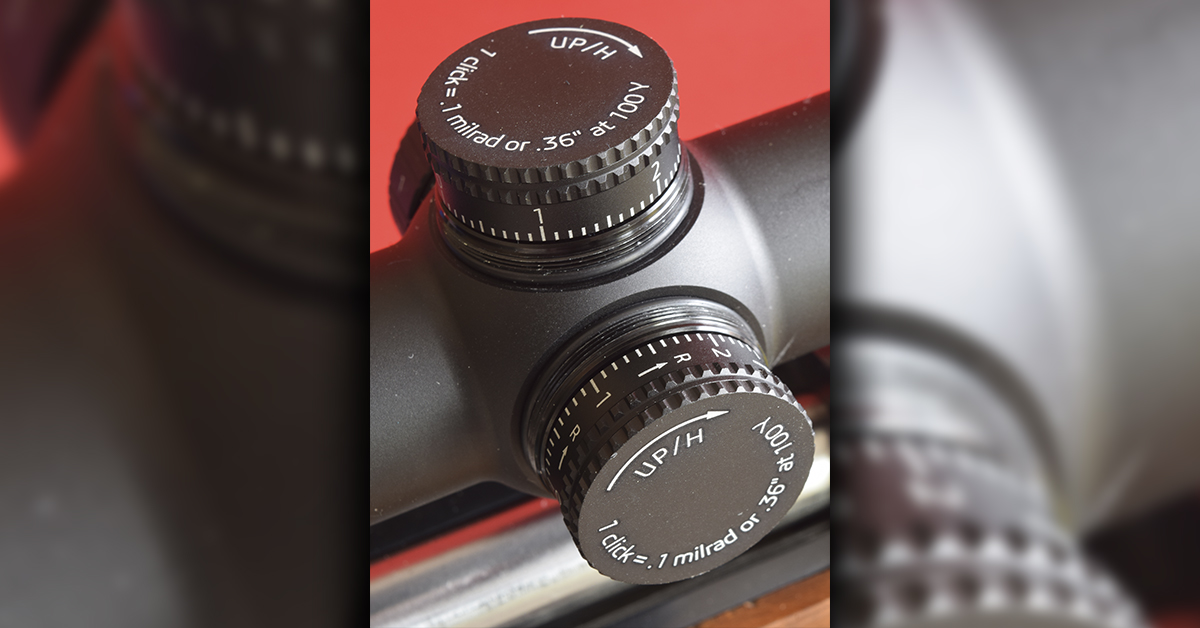
This isn’t the first 7.5x scope. Leupold introduced one in 1965 and sold it for years. In Europe, 8x scopes are ordinary. Besides its 7mm exit pupil, the GPO 7.5x50i gives you nearly 4 inches of eye relief for fast aim, and a 100-yard field over 15 feet broad — more than six deer lengths at 200 steps. Unless the animal is close and rocketing through aspens, you should get on it quickly. There’s more than enough power for a prone poke at game out yonder. ED glass yields diamond-sharp, color-true images.
I like this 7.5’s first-plane reticle. It combines a dot and fine wires with the German #4 (three bars at 3, 6 and 9 o’clock). A CR 2032 battery and a turret-side, eight-position dial illuminate the dot, which shuts off automatically after three hours of disuse.
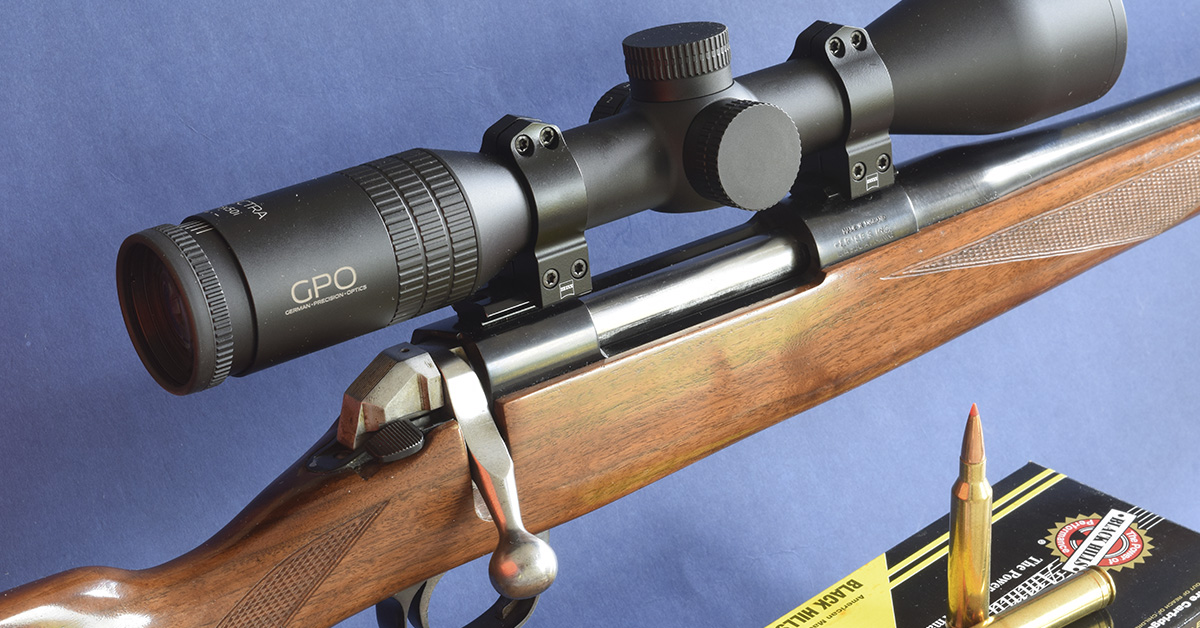
GPO offers options in resettable W/E dials. The 7.5x50i on my Herter’s U9 in 7mm Magnum has .1 mil (.36- inch) graduations. Clicks are crisp. The 7.5x50i Spectra retails for $630. “A top-quality scope at a steep discount.” said Jensen.
“And a fixed-power!” I added.
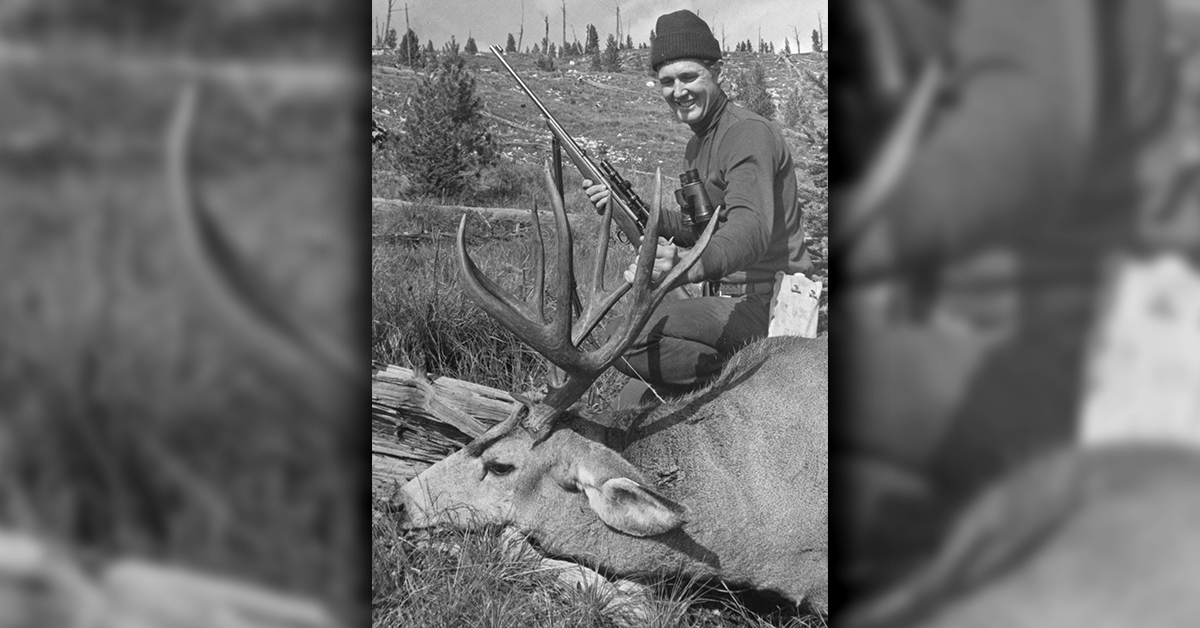
Tips For Smart Riflescope Shopping
- Prices in this article and elsewhere may well change between citing and publishing. Also, most optics sell at discount. Research retail prices. Check outlets for bargains.
- Manufacturers now fuel sales by offering a “trajectory-matched” elevation dial with a new scope. You must specify a factory load or send data from your load to get this bonus. It lets you “dial to the distance” for fast, accurate shots at long range. Ask about this perquisite; it’s not as available on entry-level scopes.
- Fully multi-coated lenses are now all but standard in riflescopes. Meaning: All lenses, inside and out, are coated with rare earths to enhance brightness across a spectrum of wavelengths. Insist on this feature!
- The “fast-focus” eyepiece is popular now. But a traditional housing works fine, too. Adjusting the eyepiece focuses the reticle, not the target. Once set, it needs no attention until age changes your vision.


